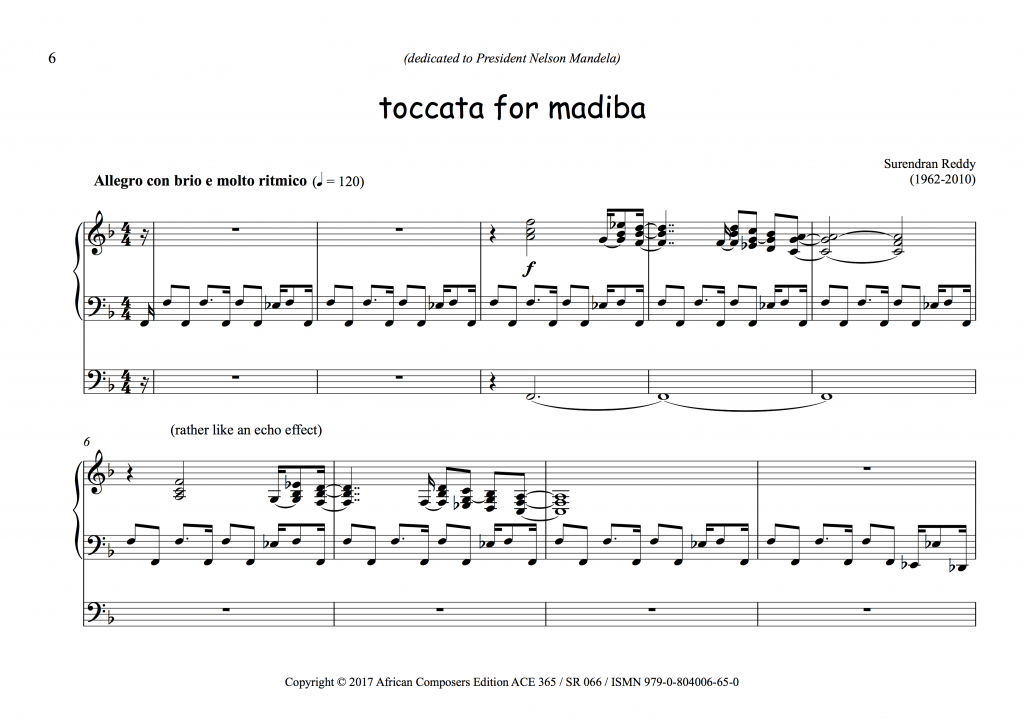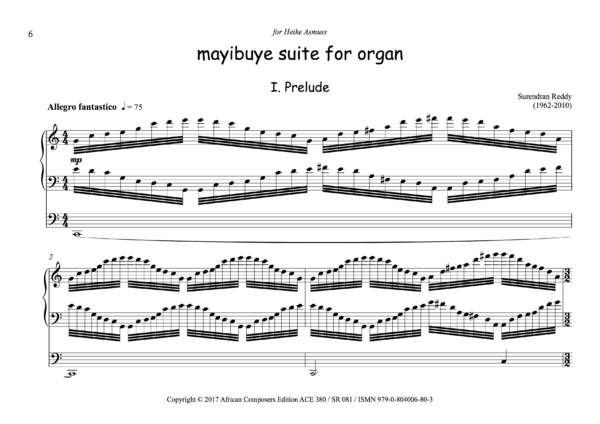toccata for madiba

R29.00
This work was commissioned by the University of South Africa (Unisa) for the first Unisa International Organ Competition. Reddy completed it in May 1997 and the Southern African Music Rights Organisation (SAMRO) published it for the competition. It was written with the specifications of the organ in Unisa’s Z.K. Matthews Hall, Pretoria in mind and was premiered there in January 1998. Notwithstanding, Reddy left the choice of registration entirely to the performer.
The dedicatee, Nelson Mandela had been elected President of the Republic of South Africa four years earlier, in April 1994. His presidency heralded the exuberant years of a new democracy famously dubbed by Archbishop Desmond Tutu ‘the rainbow nation’. As if to commemorate this, Reddy uses the African anthem, Enoch Sontonga’s ‘Nkosi Sikelel’ iAfrika’ (God Bless Africa) as a fugue-subject in the final section. By using the name ‘Madiba’ (Mandela’s Thembu clan name) in the title and by referencing Sontonga’s music, which became the first part of a new South African national anthem after 1994, Reddy links the music both to the euphoric post-apartheid Mandela years and to connotations the word ‘Madiba’ and the tune ‘Nkosi Sikelel’ iAfrika’ held for many people in southern Africa and further afield. Reddy was aware how such ‘hidden transcripts’ (as anthropologist Stuart Hall has called them) worked for the oppressed and writes about this in his monograph, truth, beauty, sadness, love and death, explaining how South African artists ‘devised a highly complex poetic art of saying things allegorically, which could be understood by those who were in the same unfortunate position’. In the middle of this monograph there is a section devoted to Madiba, whom Reddy met three times, called madiba – a novelette in sonata form, in which his three encounters are the starting point for Reddy’s fascinating and detailed digressions about the life of an artist. Reddy’s use of mbaqanga harmony and rhythm is another ‘hidden transcript’ in this piece.
Reddy typeset toccata for madiba in Sibelius in 1997 and this is the version used as the basis for ACE’s publication, which incorporates dynamics and expression from SAMRO score where these are lacking and which can be heard below. The piece has become popular among organists: Kerstin Wolf played it at the inauguration of the new organ in the Elbphilharmonie concert hall in Hamburg in 2017, for example, and Herman Jordaan has put his beautiful performance of it on soundcloud.


